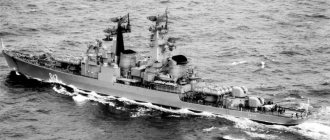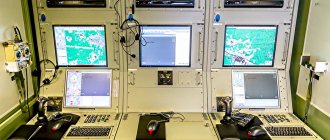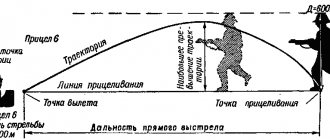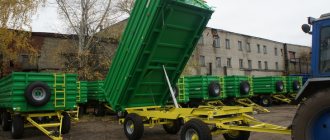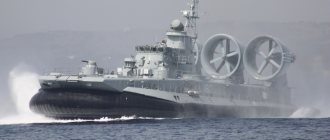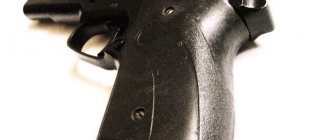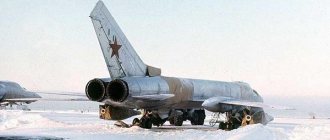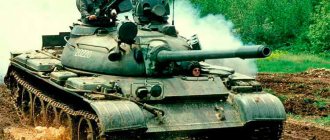- home
- Blog
- Application of an aircraft-type drone with vertical take-off
author: Gorbunov Alexander
Publication date: 22, 3, 2020
In recent years, there has been a fundamental division of the drone market into fixed-wing and multi-rotor aircraft. Each group of unmanned aircraft has its own obvious advantages and inevitable disadvantages, as well as operating features and application limitations. A new compromise solution was the emergence of a whole class of aircraft-type UAVs with vertical takeoff and landing.
Aircraft aerodynamic design
A classic version of a drone. There is a load-bearing surface of the wing, there is a fuselage, a tail, control surfaces, an engine (ICE or electric), and a propeller (pulling or pushing). There are many modifications, but the principle of flight is the same for all: the engine spins the propeller, which creates thrust, which accelerates the device in the air, the speed provides lift on the wing (thanks to the aerodynamic profile). While the motor is running, the lift force is maintained at the level required for flight. The engine stops - the speed decreases, the lift drops and the plane either loses altitude to maintain speed (planes), or loses speed and goes into a tailspin. A classic airplane wing may use flaps to increase lift (during takeoff and landing), but drones generally do not have them.
ADVANTAGES:
- Long flight duration. Relatively low consumption of fuel or battery power to ensure rotation of the propeller and maintain flight speed. The wing profile creates the necessary lift.
- Low noise level. Especially for models with an electric motor. Can ensure the stealth of a drone at relatively low altitudes.
- Low vibration level. For models with electric motor. The image quality from payload cameras is higher.
- High flight speed. Allows you to travel long distances and observe extended or distant objects.
FLAWS:
- Takeoff requires a runway or catapult for initial acceleration of the drone. The greater the take-off weight of the aircraft, the higher the speed it must develop at the start before it can proceed to normal flight.
- Large area of open space for takeoff. To accelerate and gain altitude, a lot of free space is required without trees, buildings, etc.
- Landing on the runway or with a parachute. Makes it very difficult to operate a drone. The need for a runway greatly limits the area of possible use, and the option of landing with a parachute often leads to failure of structural elements and equipment as a result of a hard landing or collision with obstacles.
- Inability to hover over an object of interest for detailed examination. Surveying and monitoring have to be carried out at the UAV's cruising speed.
Multi-rotor version of the aircraft
A later modification that replaced the helicopter type of aircraft, which never gained popularity in the unmanned industry due to the high level of technical complexity both in maintenance and in flight control control.
The wide variety of multi-rotor designs for drones is determined primarily by the number and location of electric motors and blades that provide thrust and flight control. So the most popular models are quadcopters, hexacopters and octocopters. Moreover, the latter can also be with a coaxial arrangement of 4+4 motors to provide higher traction.
Unlike an airplane-type aircraft, the only source of lift for a copter is the thrust of the propeller, which is spun by an electric motor. Therefore, in order to keep the device in the air, electricity from the battery on board is continuously consumed. Control in flight also occurs by changing the speed of rotation of the rotors. Roll and pitch are determined by changes in the thrust of the blades on opposite arms, and the heading is adjusted by the difference in torque of the engines, creating a total torque in one direction or the other.
When the battery is discharged and the necessary thrust is lost to maintain flight, a multi-rotor aircraft inevitably loses altitude and goes into an uncontrolled fall. In this case, he has no opportunity to make a glide and a soft landing. The same thing happens when an engine fails or a blade ruptures in the air.
ADVANTAGES:
- The minimum required area for an aircraft to take off and land. Rapid climb above the starting point. Any approach and descent trajectory.
- Large load capacity with small dimensions.
- No overload during takeoff and landing. More options for different types of payloads.
- Compactness. Folding structures.
- Easy to repair. Fast replacement of parts.
FLAWS:
- Low flight duration. Rare models reach 60 minutes of flight time.
- Low speed. It is more difficult to travel long distances, especially in windy weather.
- High noise level. Large devices are noticeable even at altitudes of 150 meters.
- Inevitable fall in case of engine failure or battery discharge.
DIY drone
Hubsan Spy Hawk - a ready-made drone model In our magazine, we have repeatedly written about devices that incorporate all the advanced achievements of modern communication and computing technologies - unmanned aerial vehicles. However, the creation of drones is not only the prerogative of states with a powerful military-industrial complex. In recent years, electronic components for aircraft modeling have become very affordable. To assemble a glider and equip it with electronic components with not the worst characteristics, you need to spend less money than a new iPhone costs. In this article, we will provide starting points for creating an unmanned aircraft controlled in first person using a camera mounted on it. Unlike quadcopter helicopters that are popular today, such a device can stay in the air longer and carry a larger payload. In addition to the camera for monitoring and control, such an aircraft can be equipped with a high-quality video camera like the GoPro HD Hero and shoot impressive high-resolution video from under the clouds. We will tell you where to buy the necessary equipment and how to assemble the model, avoiding pitfalls. You will also find out where you can purchase ready-made models that do not require assembly.
Aircraft selection
When visiting real stores or websites selling radio-controlled models, your eyes widen at the variety. Therefore, first of all, you need to decide on the purpose of your aircraft. If you want to put a camera on it and fly “in first person,” then the only choice is electric models. An electric drive produces less vibration than a gasoline drive and is easier to maintain. You can assemble it at home, “on your knee,” without fear of getting dirty.
In addition, if you are going to fly far, high and, most importantly, for a long time (up to one hour), then you definitely need a glider or something similar. If you want a faster and more maneuverable model, then you need to choose an aircraft with a smaller wing area and, possibly, a tailless aerodynamic design. For long flights with camera control, the propeller should be located at the rear rather than at the front of the aircraft. Thus, when shooting, it will not flash in the frame. In addition, during a hard landing, the entire propeller-motor group will remain intact.
Traditional airframe materials are called EPO or EPP. The first is a kind of foam plastic, which is not corroded by superglue and has great rigidity, and the second, polyethylene foam, ensures the overall lightness and rigidity of the model. The advantage of these materials is also that they are repairable. The direction of radio-controlled aircraft modeling, in which flights are controlled using a camera installed on the aircraft, is called FPV. This abbreviation stands for First Person View, and is translated as “first-person view.” FPV class aircraft are not beautiful copies, but gliders subordinate to their task, on which they do not even put landing gear. Every gram of weight counts here, since it is important to install a sufficiently heavy, capacious battery. Such aircraft are launched by hand, and landed simply on the fuselage.
Control
A necessary element in order to fly above the clouds while sitting in a chair on the ground is a control system. It consists of two components: a control panel and a receiver. The remote control is a transmitter of control signals.
Today there are many brands of these devices, differing in the number of channels and frequencies used. For simplicity, we will take the newest and most common one at 2.4 GHz.
As for the channels, each of them is responsible for a specific action: gas, elevator, rudder, control of camera servos, etc. The remote control is bought once and for many years to come, so it’s worth thinking about having more channels - at least no less than six.
The control panel is one of the most expensive parts of our entire unmanned system. Among the manufacturing companies, the most popular are Futaba, JR and Spektrum. There are, however, those who buy Chinese remote controls (for example, Turnigy) for 2000 rubles and are completely satisfied with them. We used a Futaba seven-channel remote. Each remote control requires a device that receives a signal from it and sends it to the controls of an airplane, helicopter, etc., that is, a receiver. It either comes complete with the remote control or is purchased separately. Chinese receivers are quite good, and they cost three times less than branded ones.
The operating range of remote controls at a frequency of 2.4 GHz is an average of a kilometer. This is the approximate range at which the aircraft is still visible to the naked eye.
Assembly
Having flown in the flight simulator and having the remote control, receiver and airplane in the closet, you can start assembling. The most difficult thing you may have to master is the soldering iron. It will be needed often, but at the first stage, most likely, you will only need to re-solder the connectors - in order to reduce the weight of the aircraft.
So, you have a remote control transmitter, a receiver and an airplane. In order to control the planes of the aircraft, servos are needed. You can ask the store about which ones are suitable for your aircraft or find out in special sections on the website. The servos are connected to the receiver.
You also need a brushless motor and a speed controller for it. It is the regulator that is responsible for how fast the propeller blades will spin when you move the lever. The battery is connected to the regulator. It also supplies power to the receiver and then through the receiver to the servos.
The assembled structure must first be checked on the table without inserting it into the aircraft. If everything spins and works, you can put it into the model. The battery is a part that will be constantly removed and replaced, so its installation must be approached carefully. Check all the parts again, as well as the alignment. The location of the center of gravity is indicated in the aircraft instructions. This is an important point and cannot be neglected.
Hint: the alignment, slightly shifted forward from the indicated one, will even help in piloting at first. After alignment and another check of all systems, a test flight can be carried out. If everything is in order, the plane has not broken down, has not flown into a forest or river, but is intact and operational, then you can think about video equipment.
Video equipment
Video equipment, which is available for free sale in domestic and foreign stores, varies in power and frequency. The available frequency ranges are 900 MHz, 1.2 GHz, 2.4 GHz and 5.8 GHz. It is important to understand that the frequency of the video path should not coincide with the control frequency, that is, in our case, the 2.4 GHz option can be excluded. Due to hardware availability, 1.2 GHz is a good choice.
After choosing the frequency, you need to decide on the power. For this parameter, options range from 10 mW to 2 W. The most commonly used is 600–1000 mW. Note that a power of 100 mW will not give an almost twofold increase in range compared to 600, but only by 20% and only on standard “pin” antennas. As a rule, shops offer an average power of 800 mW.
In addition, you need a camera and antennas, as well as power. The camera - a simple small black box with a lens - can be found at a video surveillance supply store. This component has several parameters that are important to you. The first of these is operating voltage. It is advisable to use 12 V, as with all other equipment. The next parameter is the number of TV lines. You need to choose a device with a resolution of 540 lines or higher - the upper limit can be 700.
A very important point is the quality of the signal (both for video and control). It depends largely not on the power of the transmitter, but on the antennas. Install a Vee antenna on an airplane and a directional antenna on the ground. The latter will give a huge increase in distance in a straight line, but if you point such a model behind your back, you will lose the signal. You also need to understand what to watch the image transmitted from the aircraft on. To begin with, you can connect the wire from the video receiver to a simple TV - the cheapest car TV device operating on 12 V will do.
Check the assembled structure again on the table. If there is a picture on the display, mount the camera with the transmitter and battery on the plane, and the receiver, TV, antenna and battery, for example, on a photo tripod.
Important: you cannot turn on the transmitter (and the control panel, and the video transmitter) without an antenna - in this case, all the equipment will burn out.
The model in the background is made of EPO foam and is very difficult to break. Skywalker in the center is made of EPP
A directional antenna, a TV, a video signal converter, a transmitter for glasses and batteries are attached to the photo tripod
Telemetry
Telemetry is an important element for camera flights. It allows you to display many useful parameters on the screen, such as battery charge, current consumption, flight altitude, distance to the starting point, direction to the starting point, GPS coordinates, roll, pitch, flight mode and others, depending on the complexity of the OSD (On Screen Display). Recently, many simple solutions have appeared, and OSD is combined with an autopilot, which, in the event of a loss of communication due to leaving the reception area or simply pressing a button, will return the aircraft to the starting point. The cost of autopilots starts from 4,500 rubles, which is not so much, considering the total cost of the equipment; losing the entire aircraft will cost much more. In addition, the autopilot provides a flight stabilization system that allows you to relax and enjoy contemplating your surroundings without fear of gusts of wind or your own piloting errors.
Fat Shark is one of the popular models of glasses with wireless image transmission and head position tracker
Increased flight range
There are two ways to increase the range - the so-called LRS (Long Range System) and the amplifier of the remote control itself.
Long Range System: Normal LRS frequency is 433 MHz. This system is connected to the trainer connector of the control panel. Essentially, this is another transmitter that receives signals from your remote control via a cable, which are then transmitted to the included receiver with a frequency of 433 MHz.
Remote control amplifier: connects instead of the standard antenna. It will not require additional receivers - you can use those that are available.
Additional equipment
The picture from the OSD can be transmitted to video glasses. Models of the Fat Shark brand, the cost of which starts from 11,000 rubles, can even track head movement and control the camera on an airplane. Of course, it is necessary to observe safety precautions, avoid flying behind your back and try not to fly where there is even the slightest doubt about “national security”. It is best to fly in open areas outside the city.
Ready-made models
If you want to quickly take to the skies, you can buy a ready-made model for flying using a camera. True, such aircraft have fewer capabilities.
AR.Drone 2
Quadcopters - aircraft with four rotors - are often used in amateur modeling due to their simple design. They can hover in place, making them suitable for filming from above. One of the interesting examples of quadcopters can be purchased for about 13,000 rubles. AR.Drone 2.0 can be controlled from smartphones or tablets. Its flight time is 15 minutes, and its range is limited by a Wi-Fi signal.
Website: ardrone2.parrot.com Hubsan Spy Hawk
There are many sets of ready-made models with FPV control. One of them is the Hubsan Spy Hawk. The set, which can be purchased for about 12,000 rubles, contains a four-channel transmitter with a display that allows you to control the model at a distance of up to 400 m. The model is equipped with a camera with a resolution of five megapixels. Website: hubsan.com
Purchase of components
It is more convenient and cheaper to buy equipment in online stores. Orders are sent by mail, and the waiting time is on average a month. We have listed only the most popular brands and brands. There is a lot of variety of equipment, as well as assembly combinations. Everyone can assemble a structure based on their own and others’ experience.
Control equipment: Futaba, JR, Spektrum FPV aircraft models: Bixler, Skywalker Video equipment: receiver-transmitter and camera, directional antenna, TV Telemetry: It must be said that this element, with all its advantages, is not always reliable and sometimes fails. For starters, we can recommend Storm cyclop, FY31AP or LRS 433. It makes sense to take a closer look at their analogues on the following sites.
Online resources: parkflyer.ru rangevideo.com foxtechfpv.com readymaderc.com hobbyking.com Another useful resource dedicated to radio-controlled models in general and FPV options in particular is forum.rcdesign.ru. Here at the flea market you can find inexpensive equipment, ready-made assembled aircraft, etc. However, ready-made kits are rarely sold and are extremely reluctant to be assembled to order.
3.Vertical take-off and landing aircraft
The most successful hybrid aerodynamic design today can be called VTOL - an aircraft with vertical take-off and landing. The drone is a full-fledged aircraft with the ability to fly vertically in quadcopter mode.
Let's consider one of the layout options. Two tail booms accommodate 4 motors for vertical takeoff and landing according to the quadcopter scheme. The fuselage has a propulsion engine with a pusher propeller for horizontal flight in aircraft mode. The wing consists of two consoles and has two ailerons as control surfaces. The tail is V-shaped. This model of an aircraft-type UAV with vertical take-off combines all the advantages of both aerodynamic designs (airplane and multi-rotor) and eliminates the disadvantages of each of them discussed above. Thus, the use of such an aircraft significantly expands the range of tasks that it can effectively cope with and reduces the requirements for operating conditions and the need to use additional equipment. We offer ready-to-fly Aspasia 2 drones.
FPV flights are not only about quadcopters
Glider with pusher propeller. Wingspan 1600 mm I accidentally got into one interesting old geek hobby - aircraft modeling, and it turned out that it was not covered on Habré. But flying, especially in first person, is easy and fun, and tinkering with microcontrollers and a soldering iron, PID control, autopilot. And the feeling of flying again.
Judging by the speed of technology development in the field of amateur aircraft construction, the use of computer vision, for example, will not come here soon, so it would be good to attract more people to the hobby.
I’ve always had an interest in quadcopters, but I couldn’t understand why I needed it. Until I accidentally saw the glider, and then everything fell into place! It turns out that I wanted to fly on a glider, to be able to turn off the engine, adjust the flaps and soar, and all this endless s-z-z-z-z is boredom.
What models are there?
By design, in addition to gliders, there are aerobatic aircraft, all kinds of replica models and flying wings. The latter are distinguished by frighteningly high speeds and look a lot like children's toys, just like real wings.
The aircraft's design typically consists of an EPO foam wing and tail and a plastic or foam fuselage. Several servos and a motor. For those who want to make their own plane entirely themselves, there are also many options.
According to the configuration there are versions:
- KIT - only the aircraft and the necessary structural elements, such as rods;
- PNP (Plug and Play) - additionally includes installed servos and motor;
- RTF (Ready to Fly) - ready to fly, also includes a battery and control equipment.
Control electronics
Flight controller
For flights without an autopilot, just connect the servos to the receiver, configure the equipment, and you can fly. A more fun approach is a flight controller.
Flight controllers usually include an STM32 F4 processor, a barometer, a gyroscope, UART, I2C, and can control multiple engine controllers and servos.
firmware is INAV, Betaflight, ArduPilot. I only tried the first one, it was just updated to version 4.0, they say the waypoint missions have improved a lot.
GPS module - will allow you to automatically return home, circle over a point and fly along the route.
GPS can be equipped with a compass . As far as I understand, it will help the flight controller not to lose orientation when the GPS signal is lost or at ultra-low speeds.
Receivers . There are regular 2.4 GHz frequencies with the D16 protocol, for which the equipment has a built-in transmitter. And there are different long range systems like ExpressLRS or TBS Crossfire.
FPV camera
If you fly with an analog camera , then obviously an FPV camera will come in handy. And also a 5.8 GHz video transmitter, a helmet, glasses or a monitor with a video receiver and antennas. An analog video transmitter usually comes with a small linear polarization antenna. There are also digital video systems.
FPV helmet
In addition to the FPV camera, you can install an HD camera to record high-quality video. There are split cameras, two in one, I think I’ll try RunCam Split 4. You can install one, for example, on the tail and in flight switch between it and the base on the nose, and at the same time record 4K video.
The flight controller allows you to configure the OSD (On-screen display) - overlay an artificial horizon, battery status, speed, altitude and other useful parameters on top of the camera image.
Control equipment can be large or small; to be honest, this is their main difference. As a rule, OpenTX is flashed. Can be connected to a PC via USB for use in simulators. For your first flights in the simulator, a regular gamepad will suffice.
Government regulation
Screenshot avtm
For models from 250 g to 30 kg, you need to obtain a registration number from the Federal Air Transport Agency (just fill out an application at the State Services) and apply it to the aircraft in accordance with the recommendations. I did not specify what to do with models heavier than 30 kg. Anything lighter than 250 g need not be registered.
For visual flights, you just need to choose a place where you can fly (there are several tools for this, for example this one). For an FPV flight, you will need to obtain permission to use the airspace. This must be done in advance.
Flying
Picture from the YouTube channel Vitaly 8907
You need a field and wind that you can handle. To appreciate this, you will probably have to try yourself in a simulator, learn basic maneuvers, and landing in different weather conditions. Larger and heavier models handle wind better and can carry more payload. Small models are more convenient to transport and assemble.
Remember that you are driving a rather dangerous thing. The most unpleasant crash I had was very commonplace, I was flying at sunset and just caught the sun in my eyes and for a second I lost sight of the plane and crashed into a tree. So choose deserted places, especially at the beginning.
A crashed plane is common. As a rule, it is enough to find all the parts of the model and heat up the glue gun, then the repair takes about ten minutes. It is also possible to break the plastic fuselage, and this will be unpleasant, but it leaves more usable volume for equipment and batteries.
Impression
Flying is interesting. True, I expected a slightly different level of technology development. I’m not complaining, of course, the community is doing what it can, but back in 1988 Buran made two orbits around the planet in unmanned mode, and the engineers had, to put it mildly, slightly different processors. Today we can put a computer with tens of teraflops on a two-kilogram airplane.
I would like to see more people in this hobby, come, it's fun;)
Technical characteristics of the Aspasia 2 drone
- Flight duration: up to 120 minutes.
- Range: 15 km.
- Wingspan: 250 cm.
- Maximum take-off weight: 12 kg.
- Battery capacity: 35,000 mAh.
- Operating temperature range: -20 / + 40 °C.
- Replaceable payload kits: Yes.
- Autopilot, automatic flight: Yes.
- Collapsible modular design: Yes.
- Aircraft transport case: Yes.
- Case dimensions (length, width, height): 126/46/44 cm.
- Set weight: 31 kg.
- Manufacturer: Design Bureau of Gorbunov A.A. (KbGo)

